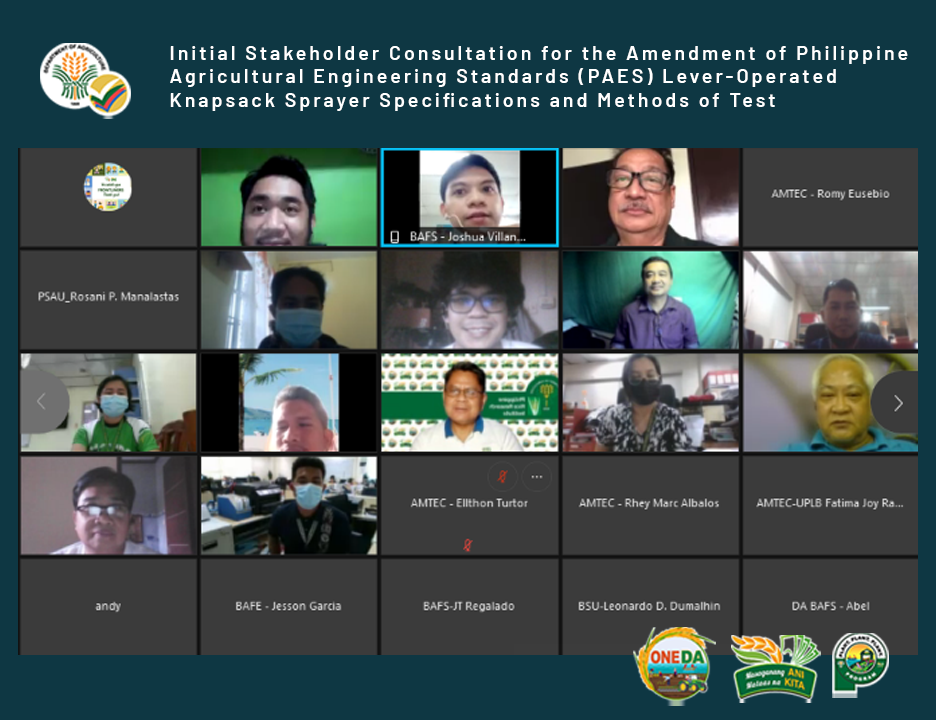
September 17, 2021. Since the beginning of agriculture, farmers have had to compete with insects, weeds and diseases. These pests and diseases reduce plant density, cause plant stunted growth and their death, cause lower production capacity and reduce the yield or quality of agricultural products (Folnovic, n.d). One of the most common ways to control or eliminate pests is to apply liquid chemicals on crops by breaking liquid into spray using crop protection equipment, usually a knapsack sprayer.
In 2000, The Philippine Agricultural Engineering Standards (PAES) 112/113:2000 - Lever-operated Knapsack Sprayer (LOKS) Specifications and Methods of test was published to ensure the standardization of the lever-operated knapsack sprayer in the country. According to the Agricultural and Machinery Testing and Evaluation Center (AMTEC), the PAES 112:2000 – LOKS Specifications and PAES 113:2000 – LOKS Methods of Test is known for its unattainable and unrealistic provisions. All of these observations resulted in a 2018 proposal of the Bureau of Agricultural and Fisheries Engineering (BAFE) to amend PAES 112 and PAES 113. After the 2018 proposal, the project was endorsed to the Bureau of Agriculture and Fisheries Standards (BAFS) for standards development.
On September 02, 2021, BAFS together with the Technical Working Group (TWG) for PAES on Lever-Operated Knapsack Sprayer Specifications and Methods of Test conducted an initial stakeholder consultation (SC) to validate and gather relevant and technical inputs and recommendations from relevant stakeholders. The initial consultation was participated by 40 relevant stakeholders representing the DA regulatory agencies, academe/research institutions, and private sector. The activity was facilitated by the AFMECH section, spearheaded by Dr. Gari Pellinor Hernandez together with Engr. Joshua Villanueva. Engr. Villanueva facilitated the discussion of the initial draft PNS and recorded the inputs and recommendations from the stakeholders.
A TWG meeting will be conducted on September 22, 2021 to review the comments gathered from the initial consultation in order to come up with a working draft standard. After which, there will be a series of TWG meetings prior to the final stakeholder consultation. The final draft of the PNS is expected to be endorsed to the Office of the Secretary for approval by 2nd quarter of 2022. ###

Figure 2. Structural Components of a Knapsack Sprayer
Retrieve from http://gatecfv.com/images/uploads/application-tech.pdf
References:
Folnovic, T. (n.d). Yield Losses Due to Pests: https://blog.agrivi.com/post/yield-losses-due-to-pests
Folnovic, T. (n.d). Importance of Pest Protection: https://blog.agrivi.com/post/importance-of-pest-protection
McAuliffe, D., & Gray, V. P., Application technology: Problems and opportunities with Knapsack sprayers, including the CFValve™ or constant flow Valve: http://gatecfv.com/images/uploads/application-tech.pdf
